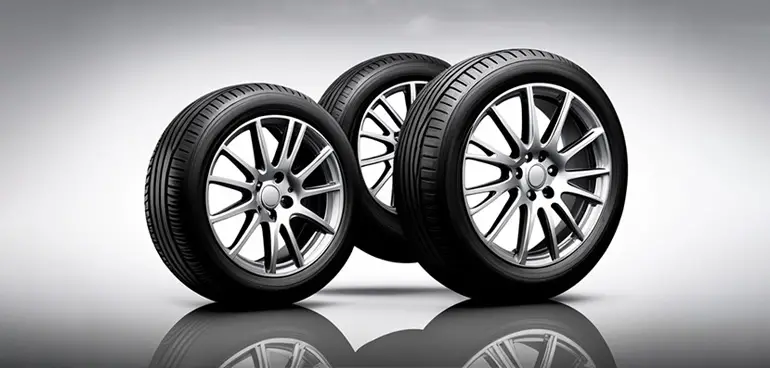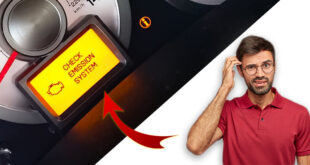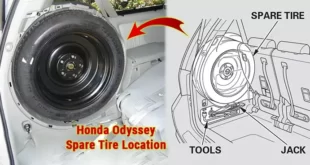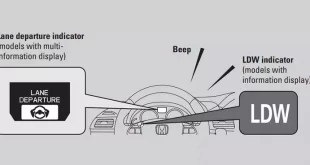Table of Contents

1. Introduction
Maintaining proper tire pressure is crucial for the performance, safety, and longevity of your Honda CR-V. Whether you’re embarking on a long road trip or simply commuting to work, having the correct Honda crv tire pressure ensures optimal handling, fuel efficiency, and traction.
2. Importance of Maintaining Proper Tire Pressure
Maintaining the correct tire pressure offers several key benefits. It promotes even tire wear, enhances vehicle stability, improves braking performance, and reduces the risk of blowouts or accidents. Neglecting tire pressure can lead to increased fuel consumption, decreased tire life, compromised handling, and decreased overall safety.
3. Recommended Tire Pressure for Honda CR-V
3.1. Understanding PSI
Tire pressure is measured in pounds per square inch (PSI). It indicates the amount of air pressure within the tire. The recommended PSI for your Honda CR-V may vary based on factors such as tire size, load capacity, and driving conditions.
3.2. Tire Pressure Specifications for Honda CR-V
To determine the appropriate tire pressure for your Honda CR-V, refer to the owner’s manual or the placard located on the driver’s side door jamb. Typically, the recommended tire pressure for Honda CR-V ranges from 30 to 35 PSI.
4. Checking and Adjusting Tire Pressure
4.1. Tire Pressure Monitoring System (TPMS)
Many Honda CR-V models are equipped with a Tire Pressure Monitoring System (TPMS). This system constantly monitors the tire pressure and alerts you if it falls below the recommended level. If your vehicle has TPMS, pay attention to any warnings and ensure proper inflation when needed.
4.2. Manual Tire Pressure Check
If your Honda CR-V doesn’t have TPMS or you want to double-check the tire pressure, follow these steps:
- Park the vehicle on level ground and engage the parking brake.
- Remove the valve cap from each tire.
- Use a reliable tire pressure gauge to measure the pressure of each tire.
- Compare the measured air pressure with the recommended pressure in the owner’s manual or on the door jamb placard.
- If necessary, add or release air using an air compressor or the facility available at a gas station.
5. Factors Affecting Tire Pressure
5.1. Temperature
Tire pressure changes with temperature fluctuations. As the temperature drops, tire pressure decreases, and vice versa. It is essential to monitor tire pressure regularly, especially during extreme weather conditions.
5.2. Seasonal Changes
Different seasons can impact tire pressure. As temperatures vary throughout the year, check and adjust your Honda CR-V’s tire pressure accordingly.
5.3. Driving Conditions
Off-road adventures or driving on rough terrain can impact tire pressure. It’s important to inspect and adjust tire pressure before engaging in such activities to ensure optimal performance and traction.
6. Benefits of Proper Tire Pressure
Maintaining proper tire pressure offers numerous benefits, including:
- Improved fuel efficiency
- Enhanced handling and maneuverability
- Increased tire lifespan
- Better traction and braking performance
- Reduced risk of accidents or blowouts
7. Consequences of Incorrect Tire Pressure
Neglecting ideal tire pressure can lead to various consequences, such as:
- Reduced fuel efficiency
- Uneven tire wear
- Compromised handling and stability
- Increased braking distance
- Higher risk of tire failure or blowouts
8. Tips for Maintaining Optimal Tire Pressure
Follow these tips to ensure your Honda CR-V maintains optimal tire pressure:
8.1. Regular Tire Inspections
Check your tire pressure at least once a month and before long trips. Inspect for any signs of damage, such as punctures or cuts.
8.2. Inflation Frequency
Inflate your tires to the recommended pressure levels as indicated in the owner’s manual or the door jamb placard. Check for leaks or punctures regularly.
8.3. Tire Pressure Gauges
Invest in a reliable tire pressure gauge to accurately measure your Honda CR-V’s tire pressure. Digital or analog gauges are available, depending on your preference.
8.4. Consulting the Owner’s Manual
Refer to your Honda CR-V’s owner’s manual for specific guidelines and recommendations regarding tire pressure. It provides valuable information tailored to your vehicle’s specifications.
9. Conclusion
Maintaining the correct tire pressure is essential for the overall performance, safety, and longevity of your Honda CR-V. By adhering to the recommended tire pressure and regularly inspecting your tires, you can enjoy a smooth and safe driving experience while optimizing fuel efficiency and extending the life of your tires.
10. FAQs
10.1. Why is tire pressure important for 2016 Honda CR-V?
Proper tire pressure is crucial for optimal vehicle performance, safety, and fuel efficiency. It enhances handling, traction, and braking performance while reducing the risk of accidents or blowouts.
10.2. How often should I check my 2015 Honda CR-V’s tire pressure?
It is recommended to check your Honda CR-V’s tire pressure at least once a month and before long trips. Regular inspections help maintain optimal tire performance.
10.3. Can I use the same tire pressure for all four tires?
While the same tire pressure is generally recommended for all four tires, consult your owner’s manual for any specific instructions or variations based on load capacity or driving conditions.
10.4. What happens if I overinflate my 2014 Honda CR-V’s tires?
Overinflating your Honda CR-V’s tires can lead to uneven tire wear, reduced traction, and a harsher ride.


